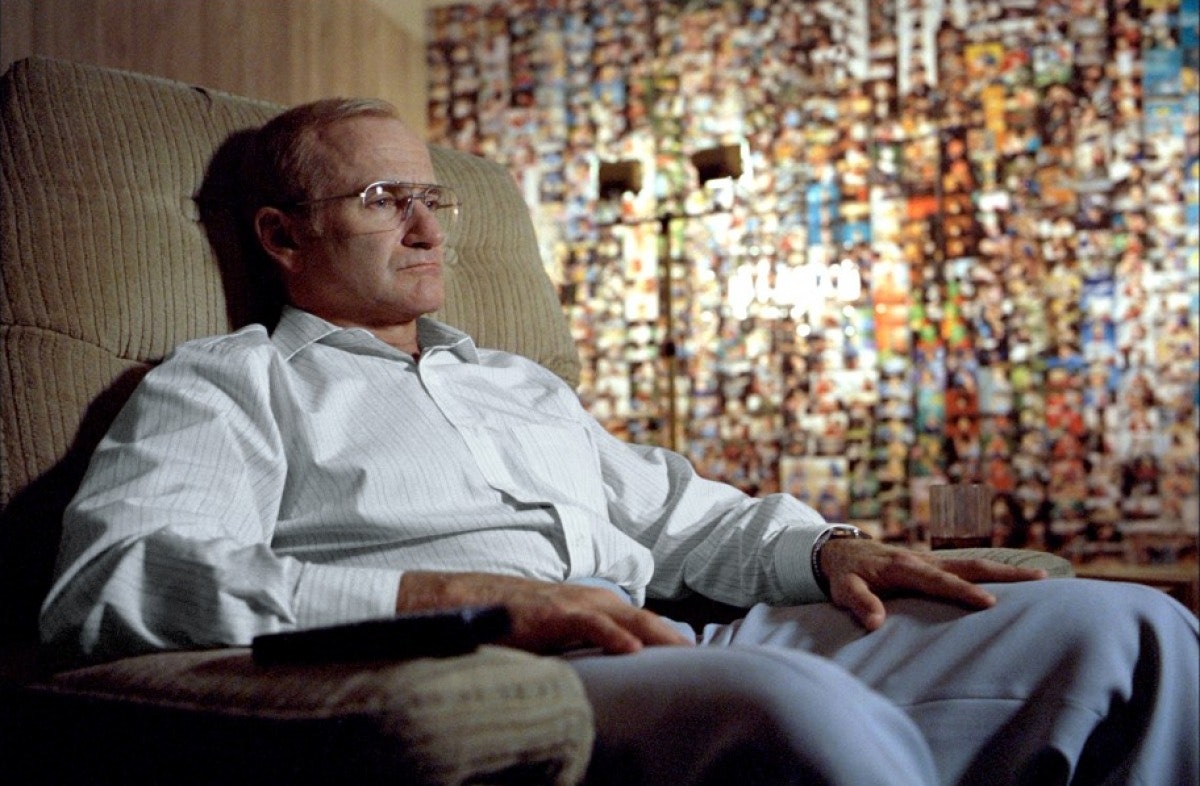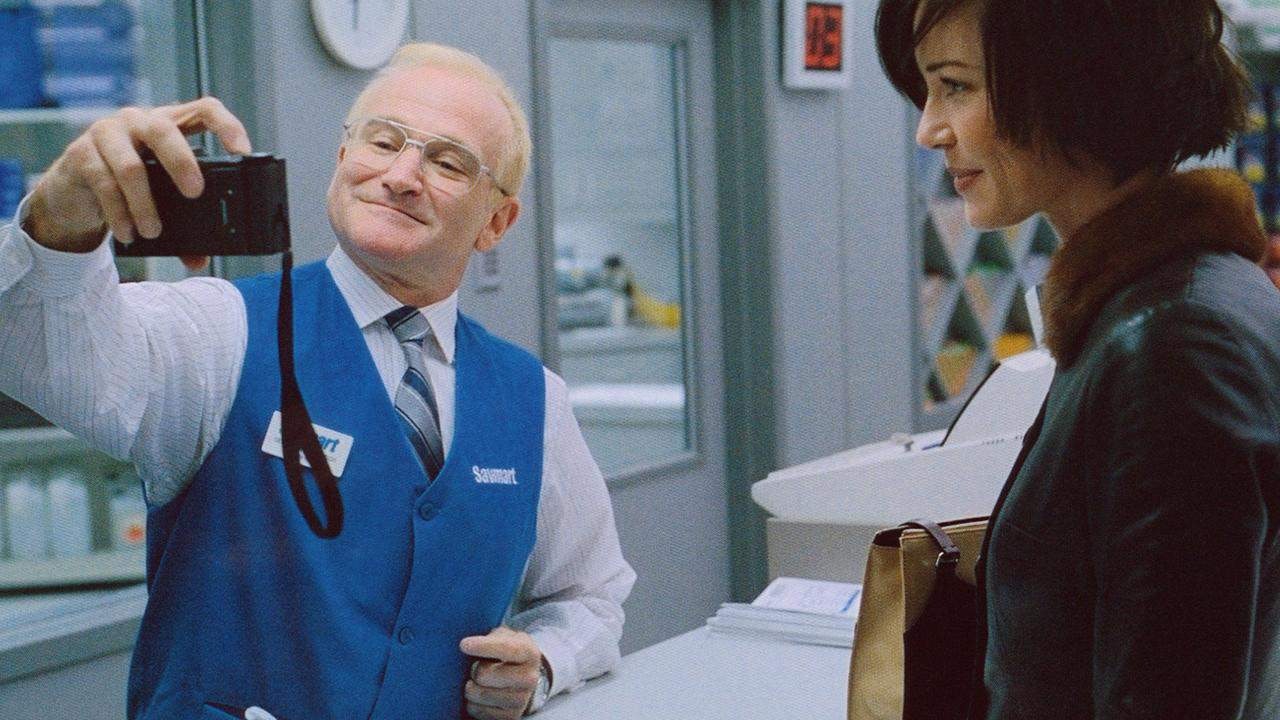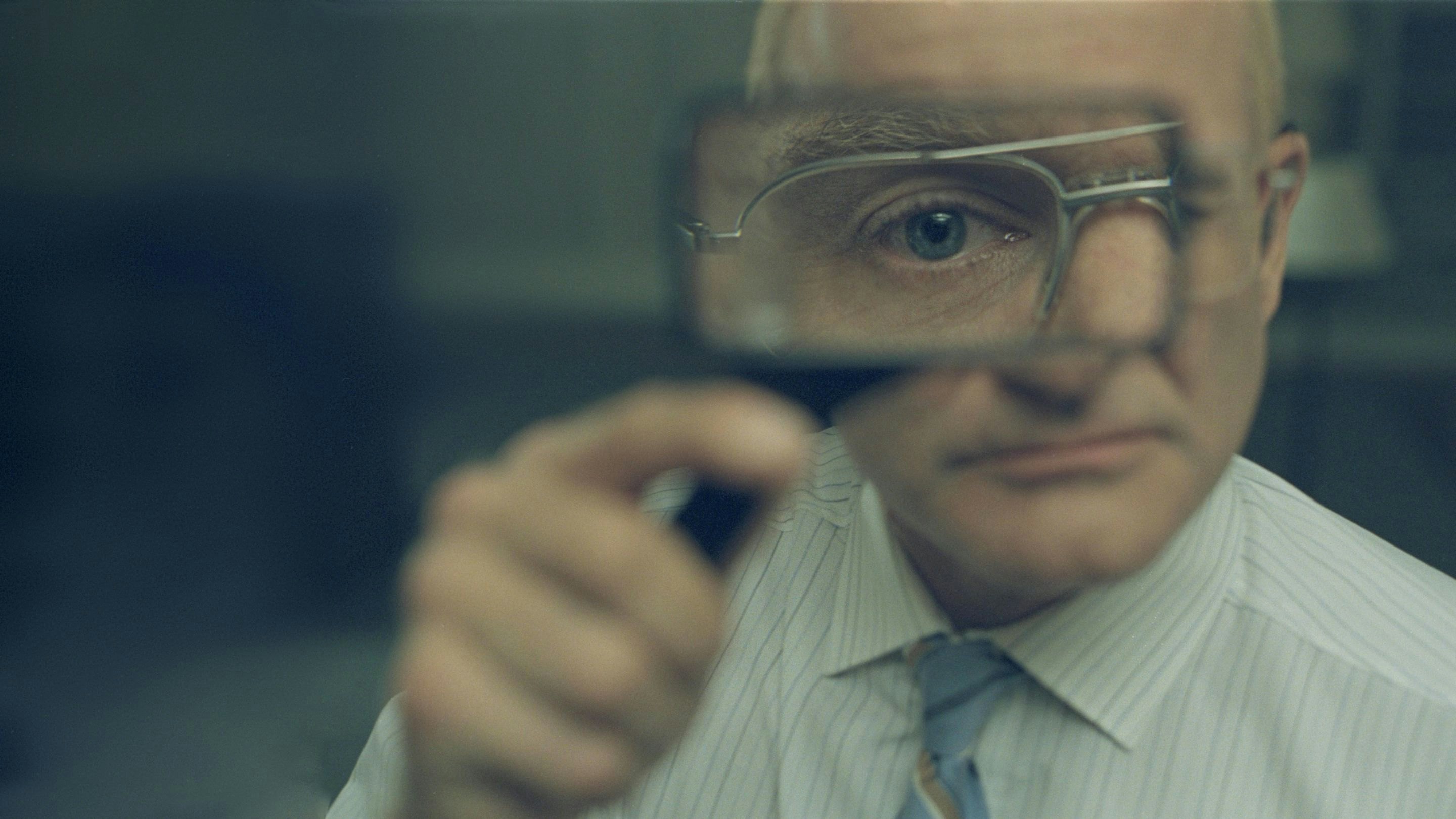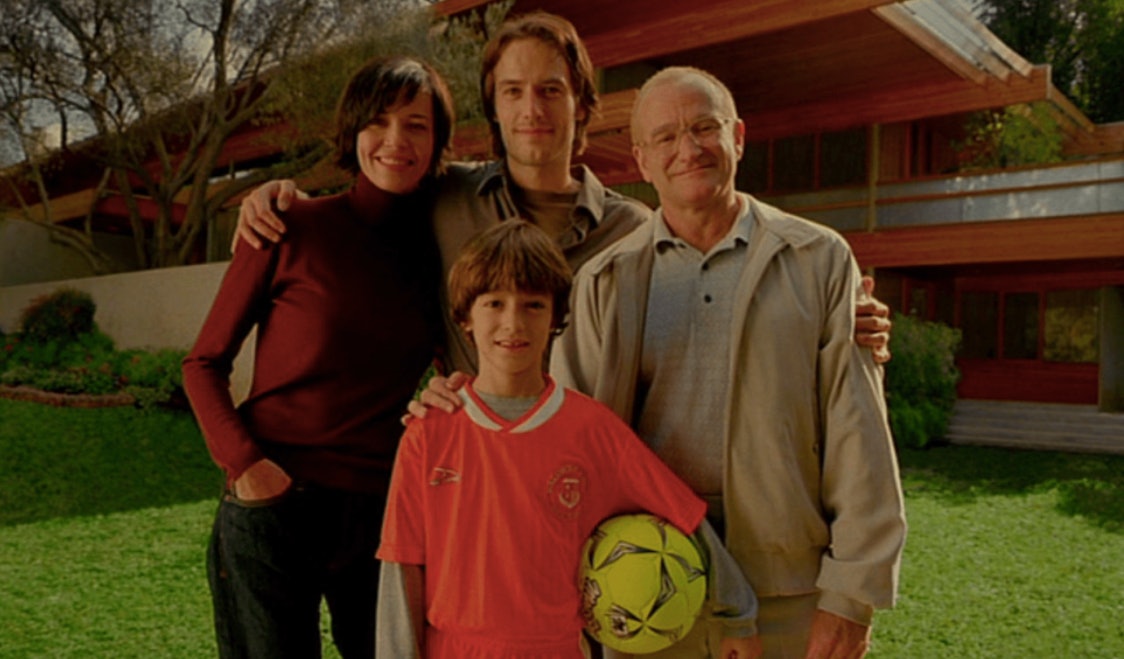
Robin Williams’ career experienced an eclipse in 2002, a trio of films released in order from dark to darker to darkest. It began with Danny DeVito’s Death to Smoochy, continued with Christopher Nolan’s Insomnia, and culminated in the legendary comedian’s grimmest film yet.
In Death to Smoochy, Williams subverts his affability to play a venal children’s entertainer. In Insomnia, he completely discards those qualities entirely to play a leering murderer. But in In Mark Romanek’s One Hour Photo (released 20 years ago today on August 21, 2002), Williams takes on something even scarier: a dweeb working the photo printing desk at a big-box retailer.
Odds are, none of us know a TV show host with a curmudgeonly streak or a crime novelist who enjoys doing crime himself — but we’ve all met a Seymour “Sy” Parrish. Maybe more than one.
Sy lives alone, in every possible sense of the phrase. He has no friends. He has no family. He has no lover. His roommate is a hamster.
That hamster is the most on-the-nose detail Romanek gives to the character. Like Sy, the chubby rodent’s day comprises a strict, monkish routine of running a loop. There are differences, naturally. The hamster jogs on an exercise wheel. Sy wakes up, eats breakfast, gets dressed, goes to work, spends his shift staring at happy people’s happy memories, goes home, eats dinner, feeds the hamster, and goes to sleep. Rinse, lather, repeat
One Hour Photo emphasizes Sy’s solitude by alternating broad strokes and observations so fleeting they appear trivial. But through cinematographer Jeff Cronenwerth’s lens, nothing is trivial. Early on, Cronenwerth photographs Sy arriving at his apartment building, ready to wind down after a day at the office. The sidewalk is barren except for Sy and one other person, who brusquely passes by with neither a word nor a glance. A pair of cars parked on the curb provide the only other proof of life in his neighborhood. Otherwise, we might guess he lives on the derelict side of town.

But nothing about the film’s presentation reads as smug, mean-spirited, or exploitative. Romanek (who wrote the script) and Williams both treat Sy with inexhaustible empathy, funneled into the narrative initially through his favorite customers, the Yorkins: Nina (Connie Nielsen), Will (Michael Vartan), and their kindhearted son, Jake (Dylan Smith). “When someone seems sad, they don’t have any friends, and people make fun of them, that makes me feel bad for them,” Jake tells his mom, clutching a Hoberman sphere as he cuddles under the covers at bedtime.
Nina pulls a classic grownup move: she lies. Sy isn’t lonely; he has people in his life who love him. He probably has a girlfriend, too. Cronenwerth lays bare the fib. Parents might be able to bullshit their kids, but the camera doesn’t. Apart from customers, the closest human company Sy has is stacks of duplicate photos of the Yorkins he surreptitiously prints at work and arranges into a panel on his wall. A waitress notices Sy flipping through his ill-gotten snappies and asks if they’re his family. Like Nina, he lies. It’s the moment where his fondness bleeds into fantasy, and where Sy’s fixation becomes truly dangerous.

Sy’s relationship with the Yorkins is unhealthy from the start, of course. Even the small acts of kindness he shows them float along unstable undercurrents. Sy means well when he gives Jake a free disposable camera as a birthday present, but the gesture is corrupted by Sy’s unspoken obsession. With gifts, it’s the thought that counts. That idiom applies to Sy, even though the thought comes from the void in his heart where there should be fulfillment. The taint of his delusion greases his every interaction with Will, Nina, and Jake, and that makes him menacing.
Heightening that menace is his sadness and his genuine tenderness for the Yorkins. Sy is a stalker. He is a threat to their safety and sanctity. But as tough a pill to swallow as this may be, he does care about them. In several ways, that care is selfish. It sustains his fantasy of being “Uncle Sy,” indulged in a sequence where he imagines strolling into their modern-style house, settling on their sofa with a beer, watching a football game, and helping Jake assemble a new toy when they return from shopping. Care preserves his belief that the world is a fine place. Care helps him repress the implied childhood trauma inflicted on him by his own father.
But Sy sees the fabric of the Yorkins’ existence and it makes him smile because theirs is a charmed life of endless joy–except that photographs only tell part of the story. When Sy discovers proof of Will’s infidelity, his illusion of the Yorkins shatters, and his grasp on the order of the universe with it. If nothing else, he needs them to be okay so he can be okay. He certainly would rather actualize the Uncle Sy scenario, but maintaining his sanity is a good enough consolation prize.

Audiences may wish, to a point, that Sy had the relationship with the Yorkins that he wants. His isolation makes up One Hour Photo’s oxygen. Every second that goes by, we inhale that sensation. Its corrosive effect on Sy is so well-realized that we can’t resist the Uncle Sy sequence. Sy is, after all, a victim. Romanek’s writing suggests Sy is the way he is as a result of his trauma. Abuse left him withdrawn and unable to connect with other people. A lifetime of separation from meaningful companionship has stricken him with desperation.
This is the first characteristic distinguishing Sy from Walter Finch, the killer he plays in Insomnia, as well as Randy Rainbow, the repugnant kids’ performer he plays in Death to Smoochy. Both men are driven by ego instead of emotion. The second characteristic is arguably more important because it’s a more sobering consideration: Sy is an everyman. Figures like Finch and Randy only exist in fiction–a general rule, but largely true. People like Sy work at the pharmacy down the block, the grocery store around the corner, or the local post office; they’re very real, and Williams’ tight-lipped, downcast performance is a reflection of that reality. That’s not to say that the clerks and checkout counter folks you encounter every single day of your life will creep into your private life; rather, One Hour Photo’s choice in antihero hits close to home with such quiet blunt force that Sy emerges as Williams’ most indelible role of 2002. There’s nothing the man wouldn’t do in pursuit of his fantasy – almost.
In One Hour Photo’s climax, Sy accosts Will and Maya (Erin Daniels), his side piece, during a hotel rendezvous, taking pictures of them in flagrante delicto at knifepoint. Except he doesn’t shoot Will and Maya at all. He shoots the room’s furniture instead. It’s a final flash of innocence the film grants him before it ends, a parting shot to complicate our feelings about his actions’ effect on the Yorkins.
In 2022, when incel-motivated violence and mass shootings have thrown the dangers posed by alienated white men sharp relief, Sy cuts a particularly chilling and prophetic figure. The revelation stirs doubt. It pits our sympathy against our better judgment. But it especially cements Williams as an elastic actor capable of winning our affections one minute, then roiling our stomachs the next.







